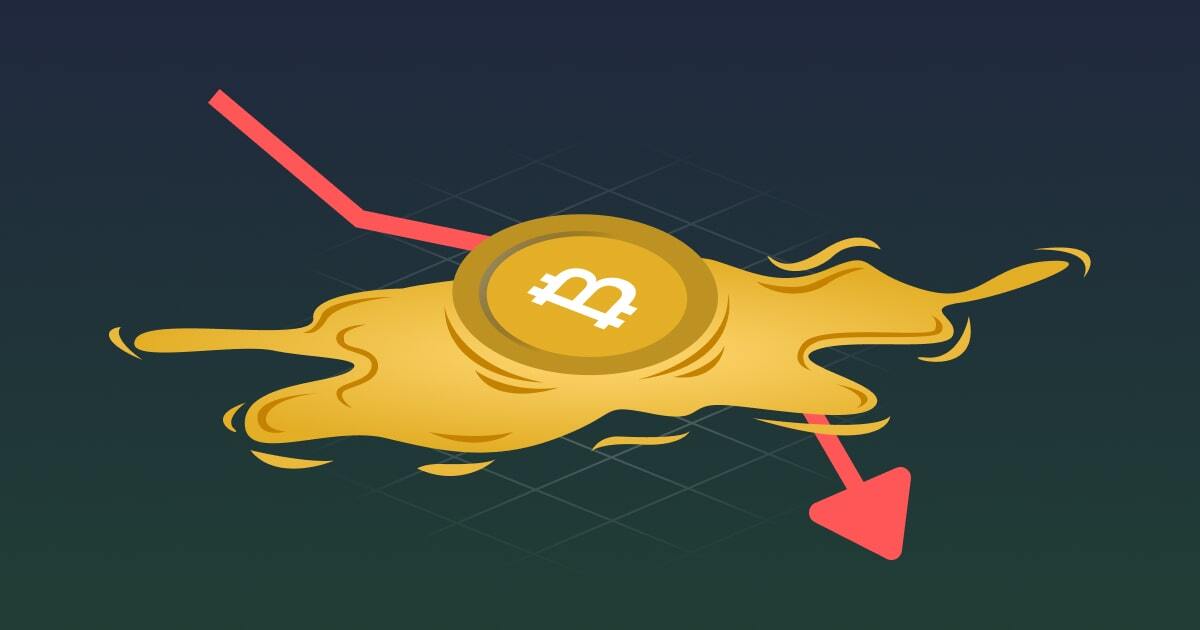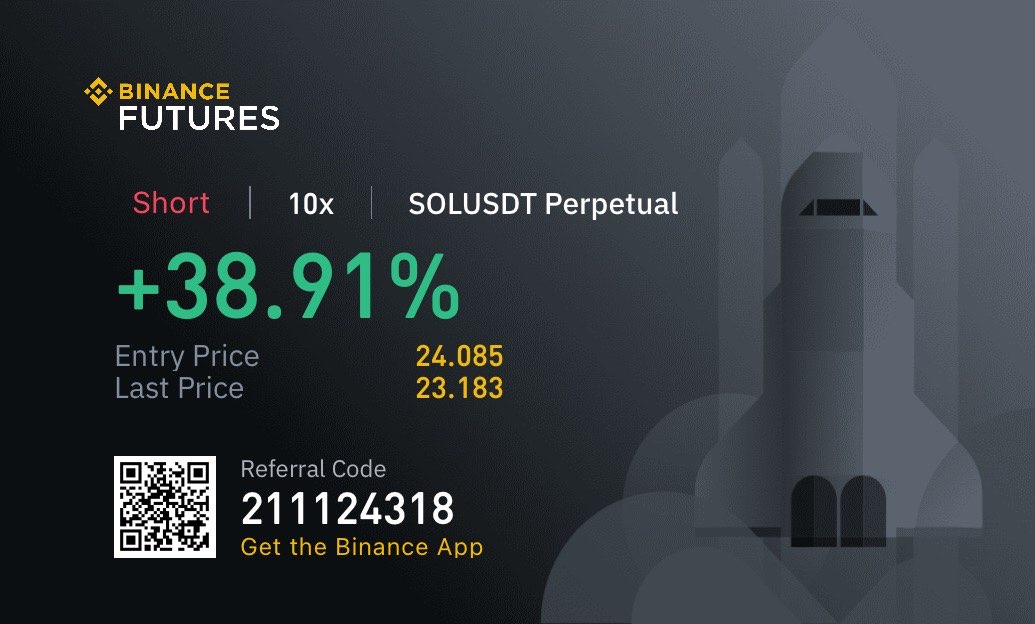
Liquidation in cryptocurrency is a forced closure of your crypto trade by the exchange if you can’t keep up with the required margin.
Crypto lovers have always viewed this platform as a way to go from rags to riches. They have an excellent reason for thinking in this manner because we have seen many stories about different crypto influencers who started with nothing and now have become millionaires, in some cases billionaires, after dipping their toes into the world of cryptocurrency and now have made it as their full-time profession.
However, while this sounds so good in theory, things could be more realistically challenging. You must understand that influencers who have become crypto millionaires have put in so much effort and time, learning about the industry, learning different analysis techniques, and sustaining losses along the way on numerous occasions before standing on a pedestal where everyone aspires to be.
The sustaining losses aspect is a crucial point that we will discuss here because that is the reality of things that everyone thinking of using cryptocurrency as a hedge against inflation and gaining financial independence should worry about.
While everyone will know the success stories, they must have yet to hear about the failures of many who spent everything they had on cryptocurrency, only to see their investments going down the drain. There is a reason why every crypto-related website that dispenses information, guides, and articles related to crypto warns you about the possible risks associated with it.
The biggest of them all is Liquidation, which, trust us, if you face it, sucks the joy out of your life, and if you have invested heavily, then it sets you back majorly in your journey of gaining financial independence. Let’s look at what liquidation in cryptocurrency is and how you should take steps to avoid facing it.
Understand Liquidation in Cryptocurrency

Liquidation, in the simplest of terms, means that you are forced to close your trading position, or in the case of cryptocurrency, a crypto exchange closes your trading position for you when you fail to maintain the required margin.
Liquidation acts as a safety net used by crypto exchanges to avoid sustaining heavy losses on a trade that goes in the opposite direction to what you were hoping for. What type of trade requires an exchange to take action and close your trading position?
The simple answer is any trade where you leverage your position by borrowing money from an exchange gives them the authority to monitor your trading position. If you sustain a loss more than what you leveraged for, the exchange will close your trade and take away your initial investment amount.
Learning about Leverage and Margin
Now that we know what liquidation in cryptocurrency means and how can someone, of course, not willingly achieve it, let’s look at the mechanics of this process by identifying the key components that lead you to this unwanted result.
Understanding Leverage and Margin

At the heart of liquidation lies margin trading, a strategy that allows traders to control more prominent positions with a smaller initial investment. The possibility of opening a more prominent position is achieved through borrowed funds provided by the exchange, referred to as Leverage. Leverage acts as a multiplier, amplifying potential profits and proportionally magnifying losses.
For instance, with a 10x leverage, a trader can control $10,000 worth of Bitcoin by depositing only $1,000 as a margin. However, a 10% decline in Bitcoin’s price would reduce the position’s value to $9,000, pushing it closer to the maintenance margin threshold.

The maintenance margin is the minimum acceptable ratio of your equity (initial deposit) to the total position value required to maintain your leveraged position. In our example, if the maintenance margin is 5%, the Bitcoin position’s value must stay above $5,000 to avoid liquidation.
The exchange initiates liquidation if the market fluctuates and the position’s value falls below the maintenance margin. The liquidation means the exchange automatically sells enough of your Bitcoin position to recoup its loaned funds, typically at the current market price.
Types of Liquidation
There are two primary types of liquidation: Market Order Liquidation and Limit Order Liquidation.
Market Order Liquidation is the fastest and most aggressive form, selling your assets instantly at the prevailing market price regardless of the potential loss. Imagine throwing off a life raft to stay afloat in a storm.
Limit Order Liquidation attempts to sell your assets at a pre-determined price to minimize losses. However, if the market is rapidly declining, even the limit price might not be reached, potentially resulting in significant losses.
Unlike traditional markets where liquidation might involve broker intervention, cryptocurrency exchanges often rely on smart contracts to automate the liquidation process.
Smart contracts execute predetermined actions based on predefined conditions, ensuring a swift and impartial response to margin calls. Automation gained through smart contracts is a defining feature of liquidation in cryptocurrency, adding efficiency for exchanges and posing challenges for traders.
The exchange platform even tells you the exact value where your position will be liquidated depending upon the size of the Leverage you took. The higher the Leverage, the more you risk losing your invested amount after just a tiny dip in the price.
Understanding these mechanics is crucial for traders who utilize Leverage. You must constantly manage your margin levels and employ risk management strategies to navigate the complex world of crypto trading with greater confidence and mitigate the risk of facing a potentially devastating liquidation event.
Why use Leverage if it increases Liquidation Risk?

The whole concept of using Leverage in crypto trading is that it allows you to make higher gains against your invested amount. The higher the Leverage, the higher the chance you have of making more capital gains and working towards your goal of improving your financial portfolio.
Experienced traders have used leveraged positions to their benefit on numerous occasions. If you follow some of the most influential crypto influencers on different social media platforms, you would have encountered screenshots of their closed positions where they have used Leverage to astonishing levels like 20x,30x, or 50x and made huge profits on their trades.
It also gives traders the wiggle room to spare more funds to purchase other cryptocurrencies and diversify their portfolios.
However, using Leverage in crypto trading is a challenging endeavor. Not only are you at the mercy of the market, which is very unpredictable and volatile, to make sure you don’t sustain heavy losses, but you are also putting yourself under a tremendous amount of stress and pressure.
A minor market dip can trigger liquidation, wiping out the initial margin and potentially leading to additional debt. You should meddle with using Leverage only if you have done a proper analysis of the market, have sufficient knowledge of the workings of the crypto market, and keep yourself updated with the general sentiment.
The key to success lies in recognizing and navigating the delicate balance between the risks and rewards of liquidation.
Risk Management Strategies for Avoiding Liquidation
As cryptocurrency markets experience rapid price fluctuations, traders engaging in margin trading must prioritize effective risk management strategies to safeguard their investments and mitigate the potential for liquidation.
Let’s explore traders’ different techniques to mitigate their losses and stay ahead of the curve.
Stop-Loss Orders
Setting stop-loss orders means that once you open a position, you choose a price level that is acceptable to you, and if the price of the crypto asset falls to this level, you should exit the trade.
You should know how much funds you will lose when the price reaches this level, and if sustaining that particular value of loss doesn’t affect your financial portfolio much, then you can enter that value in the stop-loss order.
All the exchanges have the option of entering your stop-loss price level, and even if you are not glued to the screen every second of every day, you can feel assured that you are not at risk of losing all your funds if the market moves in the direction opposite to what you anticipated.
An example of this scenario is when, before the TerraLUNA crash occurred, a trader had opened a Long Ethereum position that was going in profit.
Suddenly, after the events of the LUNA crash unfolded, the trade started to go into losses. Instead of understanding what was happening and exiting the trade, he kept it open, hoping it would eventually recover.
The market recovered a little, and he should have exited by then when his previous loss of $ 7,000 was reduced to only $1500.
However, the trader persisted that the market might improve further and didn’t close the trade. He didn’t even set a stop-loss, which, if he had, would have saved him from losing more than he could afford.
In the end, the market crashed even further, and he lost $10,000 in totality just because he didn’t set a stop-loss level. If he had, he would still have $8500 to his name, which he could have used to restart his investing journey.
Calculating Optimal Leverage Levels
Calculating optimal leverage levels is very important for those with a limited risk tolerance or lacking financial backing to lose a significant amount in just a few trades.
From personal experience, keep your position manageable because if the market swings heavily, you won’t have time to exit the trade, and your funds will be drained more quickly than you know.
One experience we have witnessed was that a trader opened a Bitcoin Long position using $1000 funds from his portfolio and used 30x Leverage. The trade-in question was opened when the FTX crypto exchange crashed and the market was in turmoil. Suddenly, the ex-CEO of Binance, Changpeng Zhao, announced that Binance was considering buying the FTX exchange.
The market started to recover, and traders saw this as an opportunity to open a long-term BTC position. But as soon as the news came out, the CZ backed out of his position, the market went down more quickly, and before he knew it, he lost his overleveraged $1000 BTC long position before he could exit.
That day, he learned a valuable lesson that it is vital to strike a balance between potential gains and the risk of liquidation, which is essential for sustainable trading practices.
Diversification and Portfolio Management
Diversification is a timeless strategy in investment and holds particular importance in the volatile cryptocurrency market.
Spreading investments across different assets helps reduce the impact of a single asset’s poor performance. Let’s take another real-life example of how diversification can help you to avoid liquidation.
When the TerraLuna crash occurred, a trader opened a long position on LUNA at $5000. He had used all his crypto funds in that position and had no other crypto asset in his portfolio that would act as his safety net in case of any black swan event.
When the crypto market took a massive dive after the LUNA crash, and the crypto asset’s price went from greater than $100 to nearly $0, the trader saw his financial portfolio drained completely.
To this day, he hasn’t returned to the world of crypto trading. He didn’t have the appetite to lose this much money again, which he lost because he needed to diversify his portfolio.
Effective portfolio management and diversification, including regular reassessment of positions and risk exposure, allows traders to adapt to changing market conditions.
Continuous Monitoring and Adjustment
Cryptocurrency markets operate 24/7, and price movements can occur at any time. Traders must engage in continuous monitoring of their positions and the overall market.
Being vigilant allows for timely adjustments to risk management strategies, particularly during heightened volatility, news events, or unexpected market developments.
Simulation
Engaging in simulations through demo accounts on cryptocurrency exchanges is a valuable practice for individuals seeking to fortify their understanding of how to steer clear of liquidation risks.
These virtual environments mirror real-market conditions, allowing users to experiment with different trading strategies, assess the impact of Leverage, and observe the outcomes of diverse risk management approaches without exposing actual funds.
By actively participating in simulated trades, individuals can refine their decision-making skills, comprehend the intricacies of margin trading, and polish their skills to set effective stop-loss orders.
Using this hands-on experience builds confidence and provides a practical foundation for navigating the complexities of leveraged cryptocurrency trading and mitigating the potential pitfalls associated with liquidation events.
Conclusion
Navigating cryptocurrency’s highs and lows demands strategic risk management. Stop-loss orders, optimal leverage calculations, portfolio diversification, and vigilance are the tools for resilience in this volatile space. Success hinges on mastering the risk-reward balance. Continuous learning is critical to securing financial independence in the dynamic crypto world.




